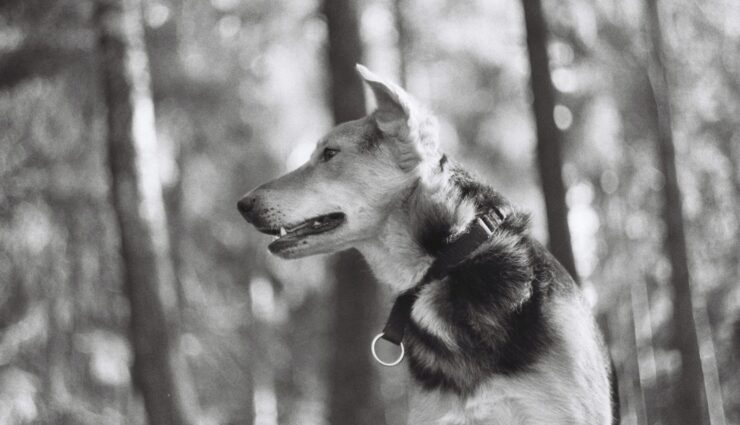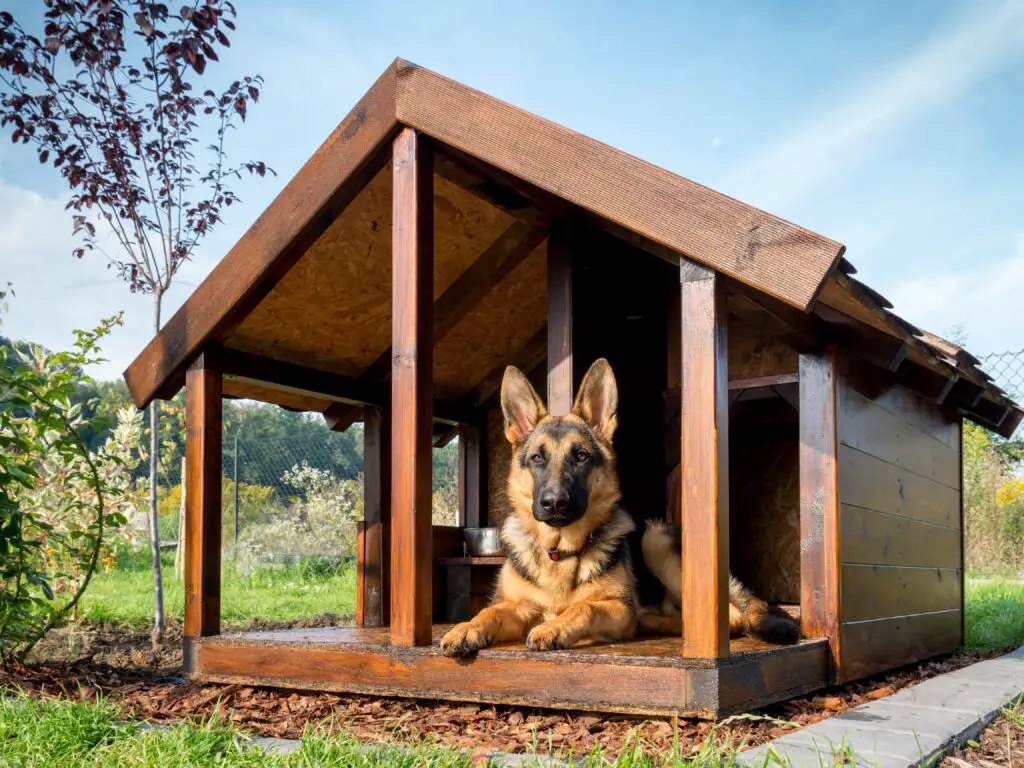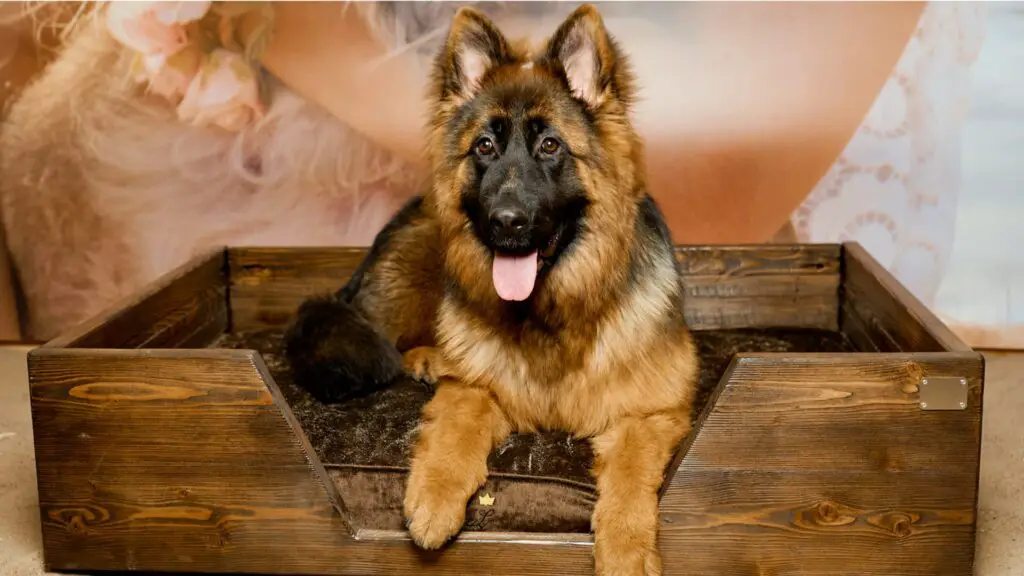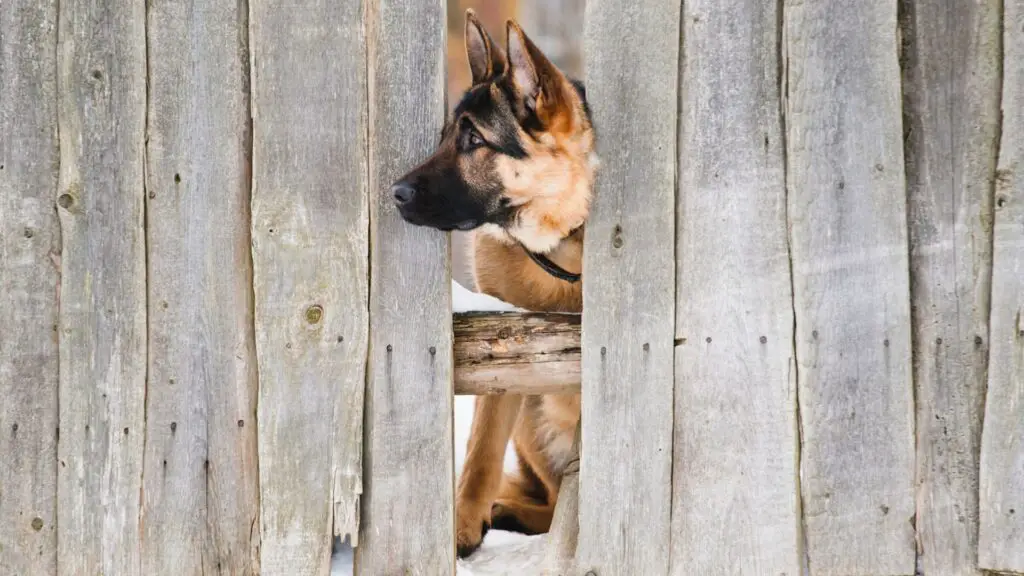Even though most German shepherd owners opt to use a harness than a collar, it’s impossible to ignore this minute but essential dog gear, the collar.
Besides making your dog look good, a collar is a tool that will help you control your dog and still help you attach your dog’s tag with essential details like his name, the owner’s details, and any other crucial information.
When opting for one, you need to check the size of the collar for your GSD puppy. You don’t need an oversized collar that will slip easily out of its neck. And remember, a tight collar may be uncomfortable for your dog.
So what size collar for a German shepherd puppy do you need?
What Size Collar for German shepherd Puppy?
When it comes to the best size collar for a German shepherd puppy, no one size fits all. With every puppy having a varying neck circumference, it’s always paramount to measure the puppy’s neck. Meanwhile, the size of collar you settle on should snug fit on your pup’s neck, ensuring it doesn’t press the windpipe.
Additionally, this collar should never be loose, as it will beat the purpose of having it on your dog’s neck in the first place.
Nevertheless, with most GSD puppies have an average neck size of 11-14 inches, you should ensure your collar is within those dimensions.
However, let’s say you got the circumference of your dog’s neck is 12 inches, don’t pick a collar with the same circumference; it will choke your pup. Instead, choose a collar with an additional 1 or 2 inches compared to the pup’s neck circumference measurements. With that, you are sure this collar won’t slip out, nor will it rub your dog’s neck.
Recommended Dog Collars For German Shepherd Puppies
- ADITYNA Leather Heavy Duty Collar (Editor’s Choice)
- Country Brook Petz Premium Nylon Dog Collar(Runner-Up)
- Blueberry Pet Classic Solid Collar (Budget Friendly)
How Do You Measure a German Shepherd Pup’s Neck?
Measuring your puppy’s neck is a simple task. All you need is to have a soft tape measure and a notebook to note the readings.
The place you have to measure is the circumference of where the collar sits. Not too close to the head, as this area has many nerve connections and should not be near the neck’s wide part. Measure the middle part of the neck.
After getting that exact area, place the tape measure at one point, then circle your dog’s neck until you return to your initial starting point. When doing so, don’t wobble the tape measure so that you can get accurate measurements. After doing so, you can note down these measurements.
Afterward, you can repeat the process to ensure you have gotten accurate measurements.
Now, to get the right size collar for your GSD puppy, add 1- 2 inches to the initial measurements you got. You can also email your dog’s neck size measurements to the collar manufacturer so that you get the correct collar size for your puppy. Afterward, the collar manufacturer will guide you on the best size of collar that your German shepherd puppy need.
When on your dog’s neck, you should be able to pass your finger underneath the collar with ease. If you are unable, the collar you bought may not be the right fit, and your dog may outgrow it with time.
Also Read: Best Dog Harness for German shepherds.
Materials for German shepherd Dog Collars
You can find collars being of various materials. Some of these collars are made of nylon, leather, metal, or cotton.
Nylon Collars
Nylon is a popular material used to make pet collars. Most manufacturers and most dog parents love nylon, as it is a durable material and water-resistant. You can find such nylon dog collars with adjusting buckles that you adjust as your dog grows.
Metal Collars
Some dog parents who have strong and aggressive German shepherds opt for metallic collars. When using this metal collar, care is needed, as improper use can lead to neck bone injuries or asphyxiate your dog. Metal collars are not supposed to be of everyday wear, as they can be uncomfortable at times.
Leather Collars
Leather collars are also becoming popular among German shepherd owners. However, real leather collars tend to be more expensive, as they are classy, strong, and durable.
- A genuine leather collar is comfortable to wear and hardly wears out.
- These leather collars can also have a plastic or metal D-ring for leash attachment.
Additionally, these leather dog collars are also chemically treated to minimize the risk of corrosion to your dog’s neck. However, some of these chemicals used can also be harmful to your dog. So it’s always vital for you to check the chemical components used to treat every leather collar you buy.
Cotton Collars
Cotton is another material that is used to make collars. Collars made of cotton are often cheap but rather not durable. These collars are often for one of use, for example, during parties. Using a cotton collar for your aggressive puppy may not be the best decision.
Plus: What Size Harness for German Shepherd Puppy?
Types of Collars for Your German Shepherd Puppy
You can fit various collars on your German shepherd puppy, and the collar you decide to use is determined by your dog’s personality and personal preference. With that said, here are some of the common types of shepherd collars you can find.
Standard Collar
If you have a calm dog and never pull the leash, then a standard flat collar is a perfect choice for everyday wear. These collars are often made of nylon, neoprene, or leather, and they have a buckle connection that is not that complicated.
Most of these standard collars also have a D-ring attachment, which you can use to attach the dog’s name tag and other essential details. With their design, you may find other German shepherd owners use this collar together with other types of collars, like the martingale collar or other training collars.
These pet collars for dogs also come with a wide variety of colors to choose from.
Martingale Collar
If your dog enjoys slipping out of the flat collar, and you want a collar that will restrict him, then opt for a martingale collar.
This collar has one loop that goes around your dog’s neck and an extension to which you can attach your dog’s leash. Anytime your dog pulls, this martingale dog collar tightens around your dog’s neck and loosens anytime your dog stops the pulling behavior. Such a collar is a perfect tool for training and should be used wisely.
These martingale dog collars also come in a variety of styles and colors.
Shock Collars
Also known as e-collar, this remote-controlled dog training system uses several forms of stimulus like vibration, shock, a beep to eradicate unwanted behaviors like excessive barking, jumping, and biting from your dog.
These shock collars can have varying designs and colors—and most often can cost a fortune if they have advanced features.
Although these dog collars have a negative reputation among pet owners, you will get the best results faster while not inflicting pain on your puppy when used correctly.
Halter Collars
A halter collar is like a harness on your dog’s snout. Simply it’s a head collar. Such a halter collar gives you better control of your dog, which is vital for dogs who get distracted a lot. Such a halter collar has a standard collar feature on it; then, a strap is added that circles your dog’s muzzle. While at this, an experienced handler only should use such a head collar.
Reflective Collar
A reflective collar can be made of leather or nylon. This reflective collar has a reflective material or reflective stitching that reflects light, especially at night time.
Spiked or Prong Collars
Spiked or prong collars have spikes stitched on the interior. Such collars can be dangerous when used by inexperienced dog owners, as they can injure your GSD puppy neck.
Other pet collars worth mentioning are anti-bark collars, shock collars, choke chain slip collars and tactical collars.
Final Thoughts on What Size Collar for German Shepherd Puppy
As we have discussed, a collar is one helpful tool, hard to throw away. If used correctly, you will get the best out of it. And if used in the wrong manner, your dog may dread wearing anything on its neck. Meanwhile, it’s always paramount to measure the dimensions of your puppy neck before you buy a collar. With the proper measurements, you will be better positioned to purchase the perfect collar for your German shepherd puppy.
Now tell us, which type of collar do you use for your dog? And how did you get the right size of collar for your German shepherd?
Frequently Asked Questions
At What Age, Should You Put A Collar On A Puppy?
The best age to use a German shepherd puppy collar is between 8-10 weeks. At this age, their neck muscles are strong. Again, it’s at this age you can train your puppy to walk on a leash, and a collar is a great supportive tool.
Are Collars Bad For Puppies?
Collars are not bad for puppies if they are used correctly. Collars make your puppy look classy and still make handling your puppy easy.
Where to Put the Collar on Your German shepherd Neck?
The collar that you have bought should sit right in the middle of your dog’s neck. If it sits near your dog’s head, then it may slip out or choke your dog.
Do Shock Collars Work On German Shepherds?
If used correctly by an experienced dog handler, shock collars can effectively get the intended behavior from your dog. However, you ought to know that a shock collar should never be used as a tool to punish your dog.
At What Time Should I Remove the Collar, or Should It Be All the Time Be In His Neck?
Letting your puppy stay with the collar all the time is not right, especially if he is not being supervised. For example, if your GSD is on a prong collar, he risks injuring his neck and or choke him.
On our end, we advise a collar should only be on your dog’s neck for a limited period, and never should your dog sleep with a collar on the neck.





